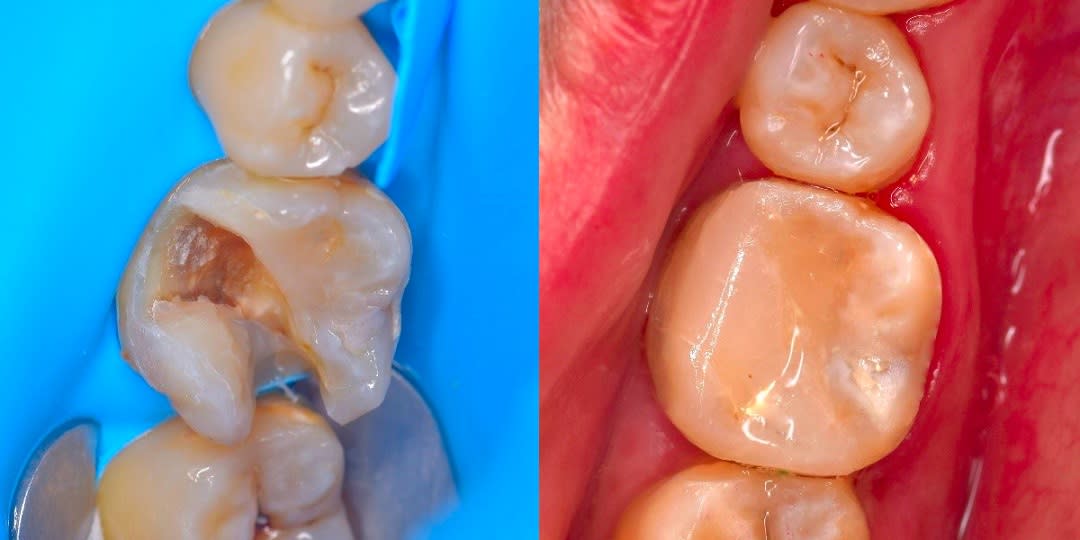Those teeth fillings aren’t black anymore

“I thought you had a tooth filled,” was a nonchalant comment from a nearby table in a restaurant.
“I did. Look,” I imagine the person who had a filling is showing his now-filled tooth to his companion.
“But where is it? I can’t see any black fillings,” his companion responded.
Tooth cavities, popularly termed ‘tooth holes’ by the public, arise from carious lesions that, if left untreated in the early stages, will progress to the formation of cavities in the teeth. Aside from cosmetic concerns that can undermine a person’s confidence, the repercussions of tooth cavities can potentially culminate in tooth infection and bad breath.
Addressing these dental concerns promptly is pivotal not only for maintaining an ideal smile but also for the overall oral health and wellbeing of a person.
A cavitated tooth needs to be treated to prevent the progression of decay and ensure the elimination of food-retaining areas. In dentistry, there are many restorative materials, commonly known as “dental fillings” that is used for treatment.
The commonly used dental fillings are amalgam, composite resin, glass ionomer cement (GIC), and resin-modified glass ionomer cement (RMGIC). The appearance of these dental fillings varies, as amalgam imparts a metallic appearance, whereas composite, RMGIC, and GIC approximate the colour of a tooth.
Notably, RMGIC and GIC are not commonly used to restore the front teeth due to their limited translucency and shade selection, which fails to meet the aesthetic expectations of patients.
In contrast, composite resin stands out as the optimal treatment choice for patients with elevated aesthetic expectations. Its versatility is evident in the extensive array of shades available, coupled with its optimal translucency, ensuring a harmonious blend with the natural teeth.
Amalgam, which was popularly used decades ago, was advised to undergo a purposeful phase-down to contribute to a gradual reduction in mercury levels in the environment. Hence, the Health Ministry of Malaysia has actively promoted the adoption of alternative restorative materials among dentists.
Instead of amalgam, dentists in Malaysia now commonly employ alternative materials such as GIC, RMGIC, and composite resin.
GIC and RMGIC are typically used to restore cavities resulting from abrasion – a condition induced by either excessive tooth brushing or the use of a hard-bristled toothbrush. RMGIC, which is composed of resin, has improved physical and aesthetic properties compared to GIC.
Therefore, RMGICs are also employed in the restoration of the back teeth. Despite both of these materials not being as aesthetically pleasing as composite, it holds a distinct advantage by being the dental filling that releases fluoride, a mineral crucial for the remineralisation of teeth. The five-year survival rates for these GIC and RMGIC restorations are 50 per cent and 79 per cent respectively, reflecting reasonably acceptable outcomes.
Composite fillings have proven highly effective as superior materials for tooth restorations, establishing themselves as the preferred choice for a range of clinical applications. Beyond their aesthetic appeal, composites also exhibit excellent mechanical properties and biocompatibility, which play a pivotal role in the success and longevity of tooth restoration.
The survival rate of composite restoration is 90 per cent over 10 years. Despite their advantages, the potential discoloration of composite restorations remains a notable concern in dentistry, seen as an aesthetic drawback. Unfortunately, addressing this issue often involves replacing the entire restoration, resulting in added costs and time implications for both the patient and the dentist.
In conclusion, the journey from cavities to confidence involves more than just restoring tooth health – it’s about making informed choices that resonate with both aesthetics and wellbeing. Each dental filling material, from the traditional to the contemporary, brings its own set of advantages and considerations.
Engaging in open discussions with your dentist, understanding the nuances of each option, and embracing preventive measures are vital steps toward a radiant smile and enduring oral health. As we navigate the evolving landscape of dental care, let us remember that a proactive approach today can lead to a brighter, healthier tomorrow for our smiles and general health.
Dr Sofya Zulkiffli and Associate Professor Dr Noor Azlin Yahya are restorative specialists at the Restorative Department, Faculty of Dentistry, Universiti Malaya.
The views expressed here are the personal opinion of the writer and do not necessarily represent that of Twentytwo13.
Main image: Before (left) and after (right) composite restoration to restore the cavitated tooth. Image by the authors.
The post Those teeth fillings aren’t black anymore appeared first on Twentytwo13.


